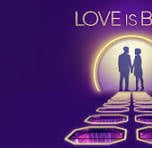Stay tuned for a new release November 2025
Why Everyone’s Obsessed with "Love Is Blind" - But Still Struggling to Feel Safe in Love
This blog explores how Love Is Blind mirrors our attachment styles in real time—from anxious spirals to avoidant shutdowns—and how pop culture can become a powerful mirror for our healing journey. Includes practical takeaways, reflection prompts, and a free attachment style audit.
Miranda Campbell, MSM, LCSW
10/21/20252 min read


There’s a moment in nearly every season of Love Is Blind when someone stares into a camera and says:
“I’ve never opened up like this before... I just know this is my person.”
It’s compelling. Emotional. Beautiful, even. But here’s the thing: most of us don’t fall apart because we’ve never found “the one.” We fall apart because we’ve never felt safe enough to be ourselves with someone we love.
And that’s where attachment comes in.
Reality dating shows are really nervous system shows.
When we binge-watch Love Is Blind, we’re not just watching people fall in love. We’re watching them bump into their attachment wounds on national TV. What seems like drama is often dysregulation. What’s framed as “just not ready” is often avoidant attachment. What gets dismissed as “clingy” might actually be a deep unmet need for emotional consistency.
Let’s break it down:
Anxious attachment shows up as needing constant reassurance (“Do you still feel the same?”), rushing into “forever” out of fear of being left behind, or losing your sense of self in a relationship.
Avoidant attachment often looks like backing away when things get too intimate, blaming the other person for “moving too fast,” or self-sabotaging connection the moment it feels real.
Disorganized attachment can show up as push-pull behavior—getting close, then panicking and pulling away, confused by your own emotional waves.
And secure attachment? It’s not perfect. It’s not drama-free. But it feels calm. It allows space for uncertainty. It creates safety instead of testing it.
Love is not a reward for being chosen. It’s a practice of being emotionally safe—with yourself and others.
What Love Is Blind rarely shows us is the inner work required to feel safe in love. Most of the couples crash not because they didn’t have chemistry, but because their nervous systems weren’t ready for consistent, vulnerable connection.
Attachment isn’t about whether or not you get married at the altar. It’s about how you handle conflict. How you repair after rupture. Whether your past is driving your present—or if you’ve learned to pause, breathe, and respond instead of react.
So what can you do with all this?
Here’s a journaling question to reflect on next time you’re watching:
Which cast member triggers me the most (and what might that say about my own relationship patterns?)
Because often, what irritates us in others is an invitation to turn inward. And what entertains us on TV can actually become a mirror.
Ready to find out your attachment style?
Take the free Attachment Style Audit and start reconnecting to yourself—no pods, no pressure, just truth.
You deserve relationships that feel like home, not like survival.
Contact
hello@therapistbestie.com
© 2025 Attachment Style Makeover™. All rights reserved.
Created by Jessica Mayo, LPC & Miranda Campbell, LCSW Published by Therapist Bestie